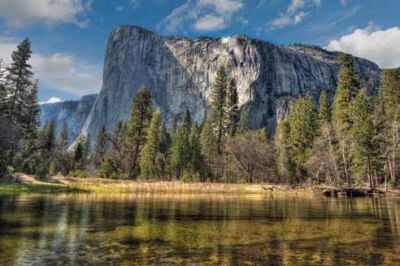articles/Digital/mergingtohdr-page1
Merging to HDR - High Dynamic Range - part 1 of 1 2 3 4 5
Published 01/02/2011

The article by Gavin Phillips which forms the main part of this feature was originally held over from the last issue of Professional Imagemaker. This turned out to be a timely delay because in the intervening period the annual Photographer of the Year competition was judged and turned into something of an HDR-fest. Like all new techniques it is very easy to stray into 'overdone' territory and, sadly, visual reasoning sometimes gets sacrificed on the altar of the technology gods. After a while the judges' resistance built up, especially when the technique was too coarse.
So that then is the message for the head of this feature - treat HDR with care, one step over the line and everything comes to bits!
Why is that?
The reason for HDR lapsing into a caricature of reality is that when the human eye interprets a scene it expects shadows to be darker, less colourful and reduced in dynamic range. If the range in the shadows is expanded, the eye is immediately confronted with something that it does not expect. This can confuse, challenge or irritate in roughly equal measures depending upon the circumstances.
In general, portraits do not respond well unless the face is one of great character (aka 'well lived in'), landscapes can do quite well as long as the expected form of the land is not too challenged. Architecture seems to respond quite well, again providing that the natural lack of information in dark areas is not too revealing. External, gothic architecture seems to respond quite well and success has been had by a number of competition entries in which this is exploited along with a bride or model in the shot. Bear in mind though that such strong effects can very rapidly become 'so last year', the winning, trend setters will have moved on! The general public, who may well be the providers of your bread and butter, of course, may not have seen much of the effect and still buy it; it is still perfectly valid as a way of distinguishing your work amongst your competitors.
HDR in Depth - Camera Set-up
I always shoot RAW because the finished HDR is always better than using JPGs. I have tried various in-camera JPG settings, but RAW always look far better.
Put your camera into 'bracketing' mode. Depending on your camera, you will be able to shoot a sequence of shots at one- or two-stop exposure increments, automatically. All you do is hold the 'fire' button down for 1-2 seconds. If you shoot in the fastest operational mode of the camera you will have less trouble if things are moving slowly; moving trees and leaves are always a problem.
You are currently on page 1
- Merging to HDR - High Dynamic Range page 1
- Merging to HDR - High Dynamic Range page 2
- Merging to HDR - High Dynamic Range page 3
- Merging to HDR - High Dynamic Range page 4
- Merging to HDR - High Dynamic Range page 5
1st Published 01/02/2011
last update 09/12/2022 14:56:40
More Digital Articles
There are 36 days to get ready for The Society of Photographers Convention and Trade Show at The Novotel London West, Hammersmith ...
which starts on Wednesday 14th January 2026





